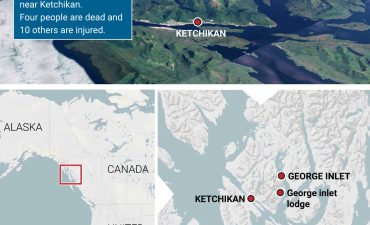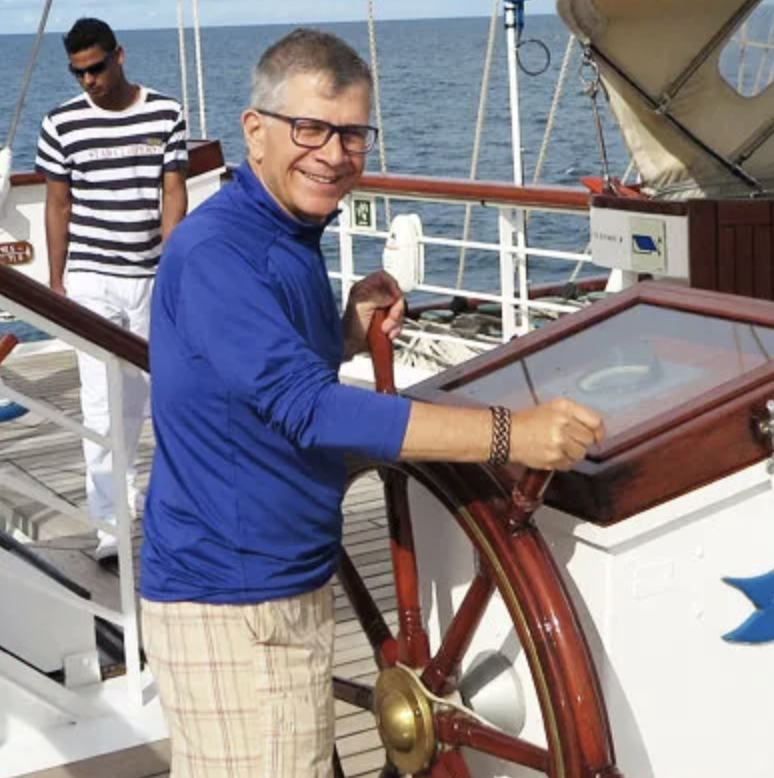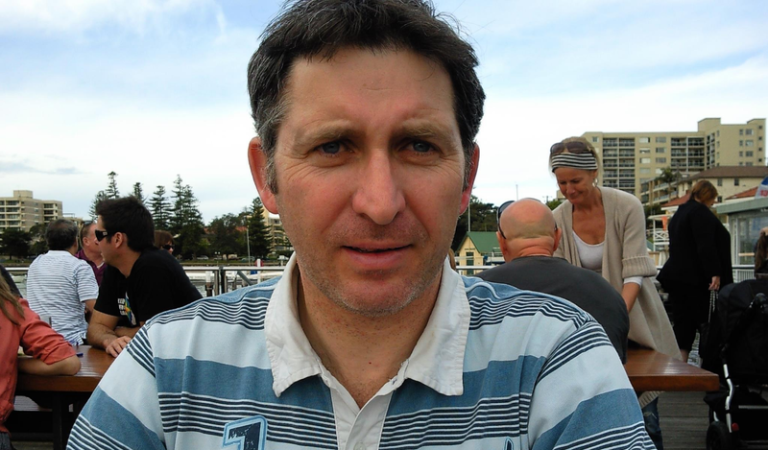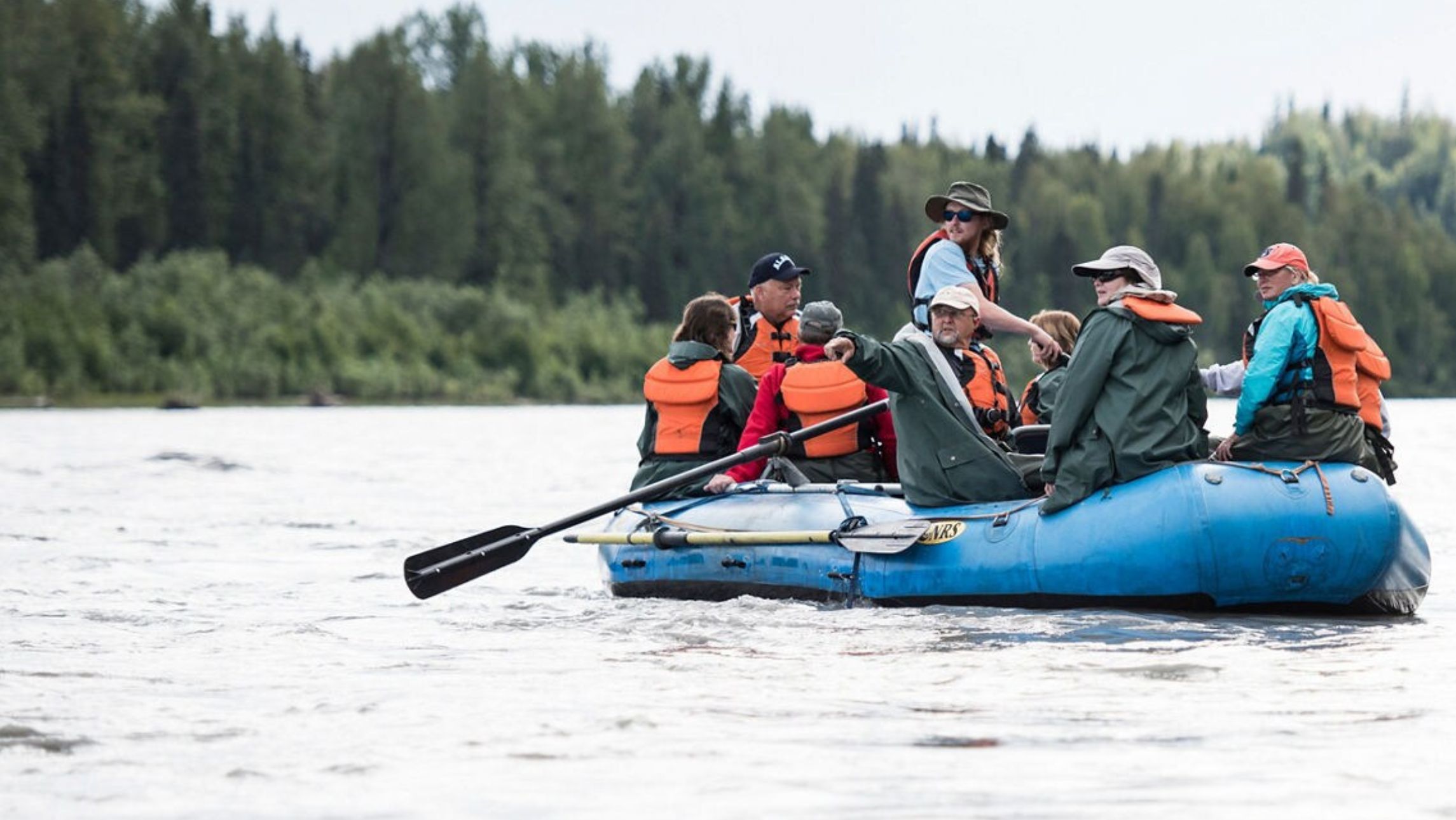Canadian air crash investigators are expected to interview the pilot of one of the seaplanes which crashed in Alaska, causing the deaths of five Princess Cruises passengers and a pilot on a shore excursion.
They are also interviewing the ten survivors of the crash.
Fourteen passengers, all of whom were travelling aboard the Royal Princess, as well as two pilots, were involved in the accident at Coon Cove, Ketchikan, on May 13.
Simon Bodie, 56, from Sydney, took the flight as part of a side trip from a cruise he was taking along the Alaskan coast. His wife was on board the ship.
The Daily Telegraph reported the father-of-two was a pilot and had asked to sit in the front of the plane.
And this weekend, one of the companies involved suspended all flightseeing trips booked in advance through cruise lines. The action was taken “out of respect for cruise line guests still in the hospital and their families,” according to a Taquan statement emailed by the PR firm Thompson and Co. in Anchorage.
Princess separately decided to suspend Taquan flightseeing tours for its passengers at least until later this month.
A de Havilland Otter DHC-3 operated by Taquan Air, was carrying 10 cruise passengers on a return trip from a Misty Fjords tour sold through Princess Cruises.
The second seaplane, a de Havilland DHC-2 Beaver, which was carrying four guests from Royal Princess, was on an independent tour run by Mountain Air.
The planes struck each other at a height of about 1000 metres before they crashed, air crash investigators reportedly said.
The US National Transportation Safety Board (NTSB) has given details about the seaplanes’ final moments in the air, CBS has reported.
The de Havilland Otter DHC-3 had descended from 1160 metres and collided with a smaller de Havilland DHC-2 Beaver.
Just why the planes collided is still a mystery. It was said vision was clear.
The deaths of four cruise ship passengers in 2007 during a sightseeing flight to Misty Fjords National Monument in southeast Alaska prompted calls for better weather data, better pilot training, and more rigorous oversight of air tour operators from the FAA.
Alaska is at the start of its busiest ever cruise season, with 1.3 million passengers expected and the largest number of megaliners.
Shore excursions involving seaplanes are popular, with six percent of passengers electing to go flight seeing.
There have been a number of crashes, however.
Mike Slack, a Texas-based aviation attorney who represents victims of a 2018 Taquan air crash in which several passengers were injured, says air tourism in southeast Alaska needs continued improvement.

An email maintained pilots are extensively trained, closely monitor weather conditions, fly with 4 miles of visibility, and the company has voluntarily adopted safety practices beyond those required by federal standards.
KTUU published a list of crashes gathered from accident records.
A Taquan Air De Havilland DHC-3 struck mountainous terrain, seriously injuring six passengers. Four passengers experienced minor injuries, the pilot was uninjured. The pilot had turned off the Terrain Awareness and Warning System.
June 25, 2015: A De Havilland DHC-3 operated by Promech Air, Inc., collided with mountainous terrain, killing eight passengers and the pilot. The NTSB determined probable cause as “(1) the pilot’s decision to continue visual flight into an area of instrument meteorological conditions, which resulted in his geographic disorientation and controlled flight into terrain; and (2) Promech’s company culture, which tacitly endorsed flying in hazardous weather and failed to manage the risks associated with the competitive pressures affecting Ketchikan-area air tour operators; its lack of a formal safety program; and its inadequate operational control of flight releases.”
July 24, 2013: An engine on a DeHavilland Beaver DHC-2 operated by Promech Air LLC lost power, causing a crash landing, seriously injuring three people. The NTSB determined an equipment problem — the failure of the linkrod or its bushing — caused the crash.
July 2, 2012: A De Havilland Beaver DHC-2 operated by S&S Aircraft Leasing, Inc. experienced difficulty on takeoff, causing a wing to strike the water. The NTSB determined probable cause to be “the pilot’s failure to maintain directional control during a step turn on floats.”
July 24, 2007: A De Havilland DHC-2 operated by Venture Travel LLC (which owns Taquan Air) crashed into steep, tree-covered terrain, killing four passengers and the pilot. The NTSB determined probable cause to be “The pilot’s decision to continue under visual flight rules into an area of instrument metrological conditions.
July 28, 2005: A De Havilland DHC-3 operated by Promech Inc.experienced a flash fire in the cockpit, causing an emergency landing. The pilot suffered burns, 10 passengers were uninjured. The NTSB’s probable cause finding was “an electrical arc on the exterior of a fuel pressure line that initiated a fuel leak and fire during cruise flight, which resulted in serious injuries to the pilot as he performed an emergency landing on the water. A factor contributing to the accident was an inadequate annual inspection of the airplane by company maintenance personnel.”
August 19, 2002: Two airplanes operated by ProMech, Inc. collided in mid-air when a plane gaining altitude struck a plane that had established a level path. None of the passengers or pilots were injured. The NTSB found probable cause to be “the pilot’s failure to maintain an adequate visual outlook during cruise climb, which resulted in a midair collision between the two airplanes.”
June 19, 2002: An idling plane hit another plane at the dock after a dockhand prematurely let go of a mooring rope. The NTSB found probable cause to be “The failure of a ground handler to follow company procedures/directives, and his premature release of a mooring line. Factors associated with the accident were the congested operations area, and the operator’s failure to provide adequate safe zones for the airplanes.”
Dec. 12, 1996: A Taquan Air De Havilland DHC-2 crashed into the water, killing the pilot. The NTSB determined “the pilot’s inadequate compensation for wind conditions, and failure to maintain adequate airspeed, which resulted in an inadvertent stall and collision with terrain (water). A factor associated with the accident was the gusty wind condition.”









